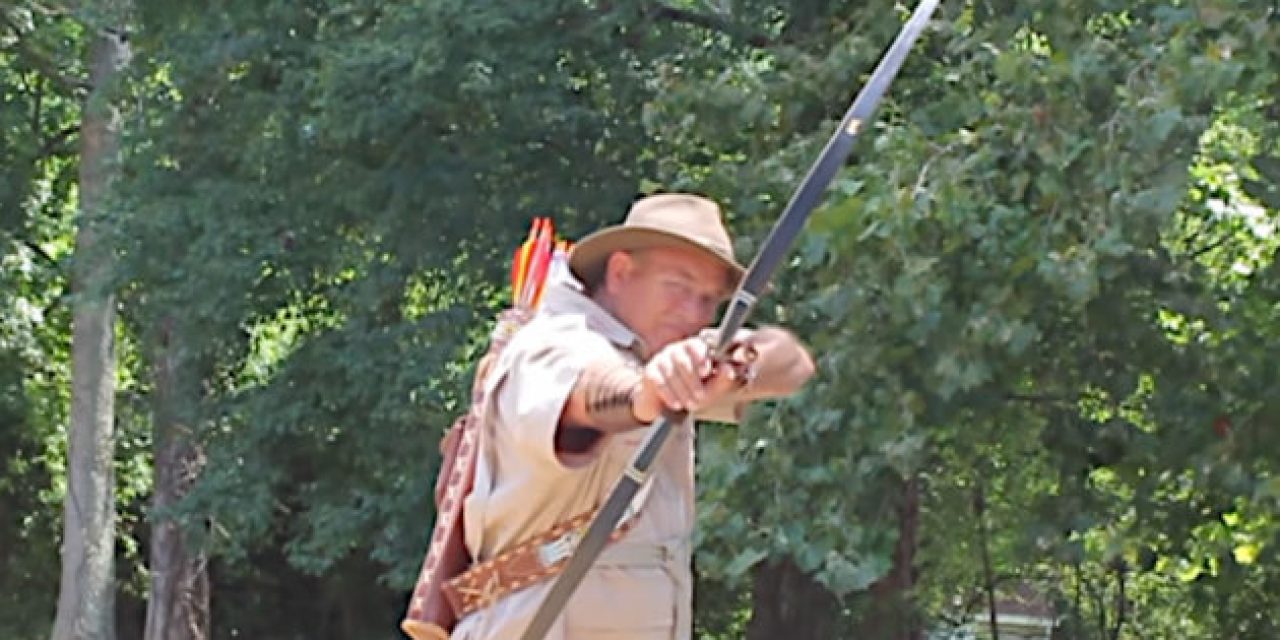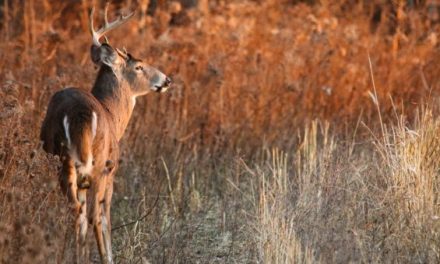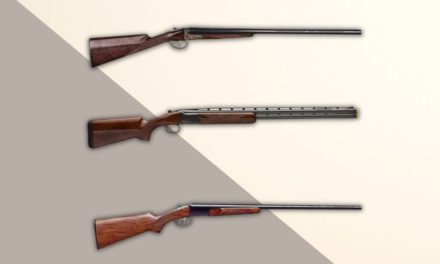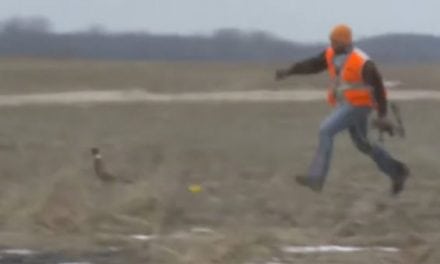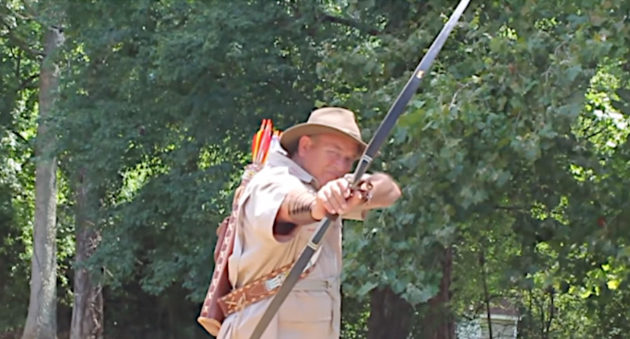
What is the archer’s paradox and does it affect your bowhunting?
Perhaps you’ve heard of the archer’s paradox. It’s a rather complicated thing to explain, and it has a lot to do with science and physics.
If you’ve heard of this archery term, you may have wondered: Does it affect your bowhunting?
We’ll explain the paradox as best we can and try to answer the question of how it relates to bowhunting.
What is the archer’s paradox?
Basically, it’s hard to explain. It helps if you think of a long bow. Theoretically, in order to hit the center of a target, you’d have to line the bowstring and limbs in a straight line dead center with the target. But it doesn’t work that way when you nock the arrow. The arrow shaft is pointed to the side and off-target.
When the bow is drawn back, the end of the arrow comes into better alignment with the riser and target downrange, but it’s still not perfectly straight.
This angle between the bow limb and arrow spine is where the archer’s paradox takes hold, and it has confused people for centuries.
How can a misaligned arrow possibly fly in a straight path and hit the target where you want without compensating? The video below from Smartereveryday explains it in a bit more detail.
Scientists have gone into the question even deeper. They’ve analyzed everything down to bow weight, draw weight, and draw length to the spine and mass of the arrow in incredible detail.
There is an extraordinary amount of math involved if you really want to dive that deep. I won’t go into that detail on that because I’m a writer and NOT a math wiz. I’ll even admit I went to summer school for math once, so you’d better believe it when I say I don’t understand it all either.
But the good news is, all you really need to know is that the reason the arrow is able to go straight is because the arrow bends and flexes in flight after release from full draw. The bending builds and retains energy, which when released, allows a flexible arrow to snap around the limb of the bow and continue following the path of the bowstring.
To the naked eye, this wobbling is invisible. But if you use a slow motion camera, the fact that the arrow isn’t flying in a perfect straight line becomes more obvious.
The best longbow archers in the world can anticipate the wobble in arrow flight and compensate their aim accordingly. It’s a little bit of science and a whole lot of skill to fully understand and take advantage of the archer’s paradox to consistently group arrows in a small area.
What does this mean for bowhunting?
So, can the paradox and the wobbling of the arrow affect your bowhunting? Well, that question depends on the type of gear that you are using.
If you shoot an old-school longbow style bow, the paradox is going to play a much bigger factor than if you’re using a modern compound.
In that video we showed earlier, Byron Ferguson is shown testing the spine of his arrows for flexibility. This is crucial. Byron says that for consistency, all his arrows must have the same amount of flex. If you’re hunting with a longbow, you will probably want to learn to do the same.
The reason for this is because bowhunting is difficult enough without each of your arrows taking a different flight path based on their spine. I’d compare it to shooting a standard and then a +P power load round with a different grain bullet out of the same handgun. Sure, the bullets are the same caliber, but both are going to have remarkably different speeds coming out of the barrel and this affects the flight.
In bowhunting, it’s a game of inches on almost every shot. Let’s assume you’re hunting whitetail deer with a longbow. Without taking in the multitude of other X-factors that come with bowhunting into account (distances, tree limbs, the angle of the animal, sharpness of your broadhead), an arrow that reacts dramatically different than the others you are shooting could mean instead of the heart, that shot ends up in that big buck’s shoulder blade. Then you’ve got a non-lethal hit and the animal gets away. You don’t want that; it’s crucial to make sure the spine of every arrow in your quiver is the same.
One might also consider that if an arrow has too much flex, not only will it probably not be as accurate, but it will also probably make your whole setup noisier. The best broadhead and bow in the world does you no good if that big buck jumps the string and your arrow gets nothing but the dirt under your stand.
Basically, if you’re using a longbow, it pays to take the time to learn about the paradox and determine what stiffness of arrow works best for your bow. In order to get past the riser of the bow and continue on the path you intended, these are things you should invest time in understanding.
Once you get the ideal setup zeroed in, you’ll be much more accurate and much more confident when you head afield to go bowhunting.
Modern equipment
Most archers agree: the archer’s paradox is either reduced or it is a total non-factor with modern recurve and compound bows due to the design. Did you ever wonder why the riser is slightly offset from the bow limbs with a cut out? That cutout allows the arrow and bow string to be in perfect alignment with one another, thus reducing or eliminating the paradox completely. The arrow no longer must go around the riser, it can simply fly straight to the target.
It is worth noting that there is still going to be arrow wobble and flex, even with the most expensive compound bows. Might there be a day where this wobble is eliminated completely? Probably not, but many hunters are now moving towards much skinnier arrows with stiffer spines that flex less and are more accurate than any arrows made in the past.
One other thing to keep in mind is that most compounds are much more powerful than longbows. Too much flex in an arrow may end up with a break in a compound setup.
If you’re having trouble getting a recurve bow or compound to group consistently, the paradox may still be playing a role. Take the time to closely examine your equipment and make sure the arrow and riser aren’t in contact with one another in any way.
Also be sure to closely examine your fletching. It helps to stabilize and correct the flex of the arrow in flight. Without proper fletching, the arrow will likely drift.
The archer’s paradox is an interesting phenomenon, especially if you enjoy physics and archery. Luckily for us, it doesn’t play a huge role in hunting so long as you’re using modern equipment.
For more outdoor content from Travis Smola, be sure to follow him on Twitter and check out his Geocaching and Outdoors with Travis Youtube channels.
NEXT: 3 THINGS TO REMEMBER WHEN ASKING FOR PERMISSION TO HUNT
WATCH
The post What is the Archer's Paradox, and How Does It Affect Your Bowhunting? appeared first on Wide Open Spaces.

